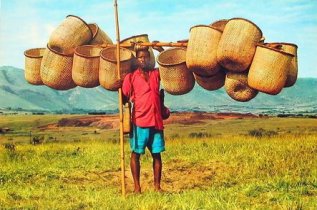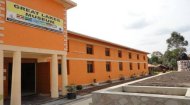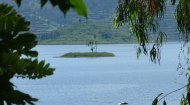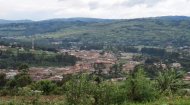
|
Kabale History |
Kabale History | Kabale History | Kabale History |
|
|

By the time the Europeans arrived in the region in the late nineteenth century, the area was little more than a chiefdom ruled over by an Omukama as part of the former Mporora Kingdom. This period saw the beginning of the colonial era, a period of dramatic transformation for Kabale. The British, Germans and Belgians all attempted to establish hegemony over the area, but each was unable to establish a viable boundary, not least because of the topography of the area ~ making it known as the Switzerland of East Africa given its mountainous terrain ~ rising from 3,000ft above sea level at Lake Edward to 13,500 feet above sea level in the far south-west. Indeed, when the first British political officer toured the area in 1910, he reported that the country was "a mass of broken hills", making the workload for his porters "very arduous." In fact, it took him five days to walk from one end of the highlands to the other. Eventually, the British were to gain the upper hand over their colonial rivals, although it was largely ignored by the locals. Still, occasional insurrections erupted when the colonials attempted to impose their unwanted administrative will over the independent local population. Around the turn of the nineteenth century the British began to subsume the Kingdoms of Buganda, Nkore and others into a protectorate rather than colony, and, as such, the six chiefdoms that had emerged from the broken Mporora kingdom including the Rukiga were considered too small to deal with separately so an instruction went out that they were to subjugate themselves to the rulers of the Nkore Kingdom which later became subject to the Ankole Agreement of 1901. With that, present-day Kabale became a town within the new country of Uganda, albeit a country that was little more than an area defined by not being one of its neighbours. Despite this, the British and other Europeans had very little actual physical presence in the area. Indeed, by 1931, a full thirty years after the Ankole Agreement was signed and implemented, there were just thirty-three resident white Europeans, eighty-six Indians and six Arabs in the Kabale area compared with a local indigenous population of just under a quarter of a million people. Throughout this period, there was ongoing resistance to colonial rule, even if that rule was largely administered by local chiefs and kings rather than directly such as in neighbouring Kenya. At the heart of this movement, known as the Nyabingi Resistance (1910 ~ 1930), two figures stand out: Ntokibiri, a former Belgian colonial army deserter who left with other Africans with many weapons, and Ndungutse, a prince of Rwanda’s Banyiginya dynasty who had fled to the area after plotting a coup attempt in Rwanda that proved unsuccessful. Ntokibiri carried out guerrilla attacks against the Belgians and British; his tactics were described by local British military leader Maj. Lawrence as “a master of the situation, there were no roads, very hilly country, look out huts and signal fires on every hill and every native as far as lay in his power apparently under [Ntokibiri]’s control-none of whom we could touch”. However, Ntokibiri was shot dead on 21st June 1919, and two of his men were executed by public hanging in Kabale six months later to act as a warning to other insurgents. The fate of the other resistance leader, Ndungutse, remains unclear, though he was certainly dead by 1930 when the last of the resistance against colonial rule had largely dissipated. As an aside, the Nyabingi Resistance was named after the Nyabingi cult which is first recorded in 1891 named after the mythical Queen Nyavingi who was so mysterious she had apparently never been seen by anyone, even her own subjects only communicating through a screen of "bark cloth." Her legend was so beguiling and of use to those who sought to control their fellow men that supernatural powers were attributed to her, although these powers didn't prevent her from being captured by the British in 1913. However, her legend continued (and indeed continues) that her spirit periodically possesses the bodies of other women from the area. Also called Queen Muhmusa or Tahtahme, it is also said that she later inspired the Nyabinghi underpinnings of Rastafarianism, having abandoned the area for good, preferring Jamaica! Cont/... |








